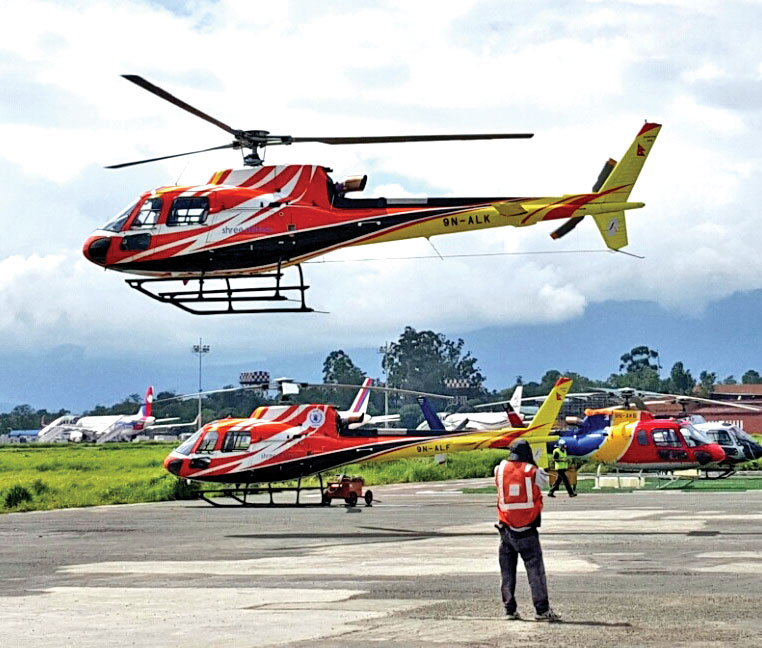Domestic airports' safety flies under the radar
Kathmandu, June 10
Take this: Nepal has 55 domestic airports - all built, maintained and operated by the Civil Aviation Authority of Nepal.
Of them, 32 are in operation while the remaining 23 have turned into pastures. But more than 80 per cent as many as 27 of the operational airports are severely under-equipped to deal with incidents such as fire.
“Domestic operators have time and again pointed out a number of deficiencies regarding the services available in different airports,” Ghanashyam Acharya, spokesperson for Airlines Operators Association of Nepal said.
Tourism and Civil Aviation Minister Ananda Prasad Pokharel said these airports are in a pathetic state because of political meddling and policy failure in identifying areas to build them.
“There is a critical need to review the existing policy for airport construction, as most of them were constructed to serve the interests of particular political leaders without doing any safety or need assessment,” said Pokharel. “There was no cost and benefit analysis carried out.”
According to operators, CAAN sits over taxpayers’ money worth billions and is only eager to construct new airports rather than maintaining basic service quality at the existing ones.
Several airports built under political pressure, without any technical study, have only turned into pastures, they added.
The International Civil Aviation Organisation standards require airports to have rescue and firefighting mechanisms available at any aerodrome.
As per ICAO standards, airports operating aircraft up to the length of 28 metres need to put at least one aviation firefighting vehicle standby while minimum three vehicles should be made available at airports handling aircraft length of more than 49 m.
Even CAAN’s aeronautical information publication-Nepal discloses that all domestic airports except Biratnagar, Simara, Bhairahawa, Nepalgunj and Pokhara are being operated without requisite rescue and firefighting services.
It also shows that there is no firefighting service available in 27 airports, including Dhangadi, Chandragadhi and Janakpur which handle ATR -72/Jet Stream aircraft (24-28 m in length) on a daily basis. CAAN has also failed to provide airlines with the facilities published in the AIP-Nepal.
As airports are not equipped with firefighting equipment and accessories, a small fire could cause high magnitude disasters, such as the one in Lukla in 2012 in which the aircraft caught fire killing all but the captain.
That amply portrays the dangers lurking at other remote airfields like Dolpa and Simikot, according to a pilot in a private airline.
According to him, rescue and fire services are binding for ensuring safety of occupants as well as avoidance of fire risks to equipment and other installations at the airports.
CAAN’s Director Krishna Bahadur Thapa, who heads rescue and firefighting services department, said most of the domestic airports lacked those services.
CAAN will gradually equip these airports with basic facilities, he said. “It has also to do with the human, financial and physical resources.”






